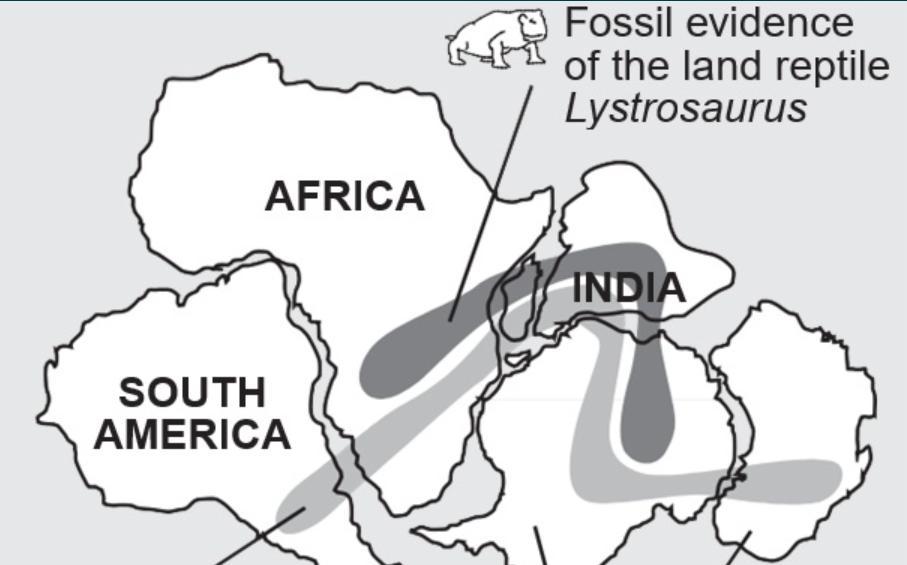The diagram shows where fossils of two different species, Lystrosaurus and Glossopteris, have been found on more than one continent. options: A) to determine how the rocks formed on the different continents B) to predict how the continents might look in the future with continued plate movement C) to explain the process of how the continents are in different locations today than in the past D) to support the theory that these continents were once joined together but then moved apart over time

Answers 1
Answer:
The correct answer is option D
Explanation:
Glossopteris is significant for understanding Earth's geological history and scientific theories. Scientist Alfred Wegener suggested that the continents were previously connected to form a supercontinent known as Pangaea around the turn of the 20th century. Wegener proposed a theory known as the Continental Drift Theory, according to which the continents split up and migrated to their present-day positions. As seen in the picture and detailed below, there is proof for his assertion on each of the continents:
The continents fit together like jigsaw pieces.
- Glacial grooves (striations) correspond to neighbouring continents.
- Mountain ranges and coal reserves correspond to nearby continents.
- On adjacent continents, fossils of Glossopteris and reptiles Lystrosaurus, Cynognathus, and Mesosaurus were discovered.
- Glossopteris seeds were too large to be dispersed by the wind.
- Only capable to swimming in fresh water, Mesosaurus could not survive an ocean voyage.
- Because they couldn't swim, Lystrosaurus and Cynognathus couldn't survive an ocean voyage.
Learn more about the information
- https://brainly.in/question/11445662?referrer=searchResults
- https://brainly.in/question/11299361?referrer=searchResults
-
Author:
ladybugnehv
-
Rate an answer:
4
If you know the answer add it here!
Choose a language and a region
How much to ban the user?
1 hour
1 day
100 years


